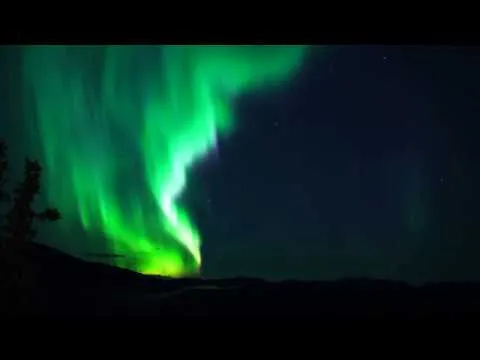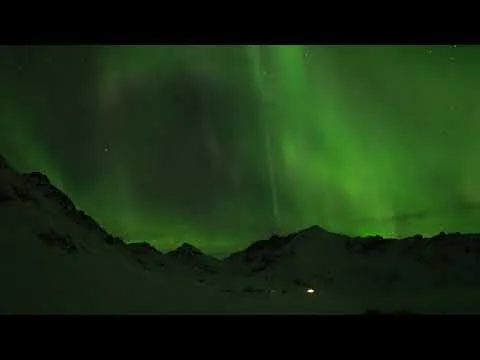A little over a year ago, I was introduced to the low light capabilities of Sony's Full Frame lineup and when it came time for an upgrade, I jumped ship from Canon. Now, to put aside all of my thoughts on the two different manufacturer's systems, I'd like to share my experience shooting the Aurora Borealis over the past year with you. More specifically so, my experience video recording these great light shows.
Time-lapse of 200 images taken over the course of an hour.
Above, you'll find one of the first time-lapses that I had ever created with my a7R II. Sony offered an app for their cameras, which was available for purchase at $9.99. I figured I would give it a go and see how it went. The app was intended to work just as an intervalometer would; however, it was pretty buggy and did not give me full control over my camera's bulb mode. In fact, this was originally intended to be twice the length, but the app froze up halfway through and locked up my camera for a while. Thankfully, I was able to recover the images and still create the clip. Another thing to mention was that at the time of using this app, it only allowed you to shoot jpegs, which was quite unfortunate. The app also used a much larger portion of my battery than I anticipated. If I remember correctly, I had to replace my battery not once, but twice, over the course of shooting these 200 images. Normally the battery will last 300-400 shots, but that app drew a lot of power.
Now, I know some of you may be thinking "why didn't he just use the Sony Time-lapse app?" Well, if you've used it and you like it, then that's awesome. However, it doesn't really fit my needs. I want control over the RAWs that go into the time-lapse and I want to be able to stitch them all together myself. But that's just me and what I like to do.
Some takeaways I had from this night:
- Use an actual intervalometer.
- Double and triple check your camera during the time-lapse to ensure it's still running and nothing went wrong.
- Have extra batteries on hand.
- Shoot the images at a shorter interval when the lights are more active. Otherwise you'll end up with a choppy clip.

Actual video clips stitched together from back in September of 2017.
The clip above is from one of the best aurora nights I had ever had the pleasure of bearing witness to. We were on a mountain side, shooting in every direction we could as they danced all around us. You can tell in the video just how intense they were. There were some points that I even had to turn my exposure down a bit to try and not have them burn out part of the image. There was just so much color, form, and movement; it was absolutely fantastic.
*Time-lapse of over 300 images taken over a couple of hours.
This time-lapse was created after we spent a night camping in Healy, Alaska. It was mid September and the aurora activity was really picking up for the year. There were displays at all hours of the night, which is quite special. Most nights the Aurora Borealis will only peak a few times during the dead hours of night. This night, the aurora was dancing a bit more calmly than my first clip, so I could have a longer interval between shots. I also increased the total quantity of shots too, in order to make the overall movement in the clip appear to be smoother. What you're seeing here in 8 seconds elapsed for hours above us.

An unedited, single clip of footage from the a7R II.
This final clip I have for you today was taken last spring in Hatcher Pass. It was ridiculously cold outside, but the bearing the low temps was worth it. Those cold nights tend to make for a great show and that's what we got. You can hear the wind brushing against the camera and the footsteps and conversations of those shooting who were trying to keep warm.
This video has a mix of different aurora displays. Sometimes you'll see thick bands across the sky that can sit there for hours. Other nights you may see flickering or flashing, which can even have different colors like yellow, pink, and red. Throughout most of the clip, you'll see columns and bands all around the frame, but between 0:50 and 1:20, you can watch some pink flickering in the center. For my videos, I like to clean up the noise a bit, as shooting between 8,000 and 52,000 ISO can get quite messy. I don't do any color grading on my aurora videos though, as I like the look they get SOOC. People can also get quite frustrated when they see these fantastic colors from all points of the rainbow in videos and then they don't see them during their own outings. So I try my best to mitigate that as well by not coloring them any differently.
Thank you for following along this far. Here are my top five tips for recording the Aurora Borealis:
- Use a tripod. So many people don't like to use them, but just do it. You'll be glad you had the extra stability.
- Open your lens as wide as it can go. I shoot my lights with a Sigma 24mm f/1.4 Art lens. I shoot my videos of the aurora at f/1.4.
- Always record for longer than you plan to. It seems like almost every time I stop recording because I think I'm done or that the display is over, the sky just explodes with color and by the time I'm ready to record again, it's gone.
- Depending on your camera, shooting at ISOs between 8,000 and 16,000 are usually pretty good for getting video of the lights. Shooting at higher ISOs of course can work as well, but at that range, your video can get very muddy with noise and artificial coloration.
- For time-lapses, longer exposures and shorter intervals make for creamier, smooth movement. While, shorter exposures and longer intervals give more shape and definition to the aurora and its shape. It's a give-and-take kind of balancing act.
Seeing the Northern Lights in video and through images is one thing, but getting out and chasing them down for yourself is truly something else. I've been running after the Aurora Borealis for nearly four years now and it never gets old. Sure, you get a lot of disappointing nights, but the nights where the lights shoot across the whole sky make it totally worth it. So embrace the cold, the sleepless nights, and the potential for disappointment and go get after it. I promise you, Nature will make it worth your while one of these nights.
Best of luck to you in your chase,
Dimitri
p.s. If you've seen or written any time-lapse or aurora video/photography articles here on Steemit, please link them below in the comments. I'd love to read them and see what else I can learn!